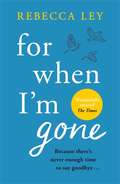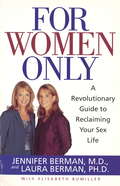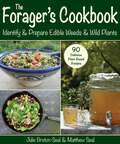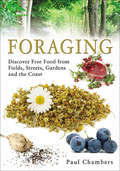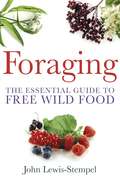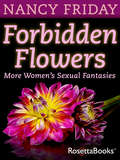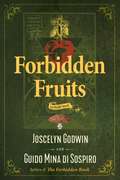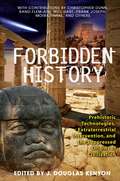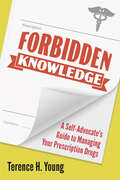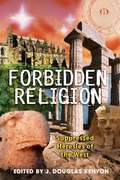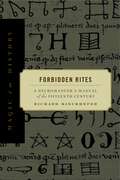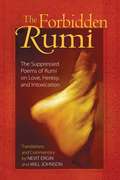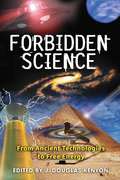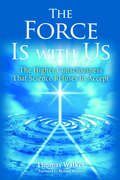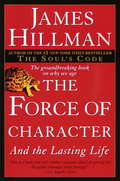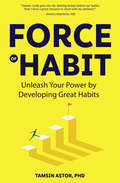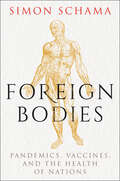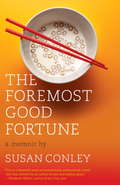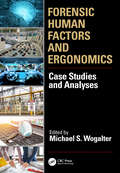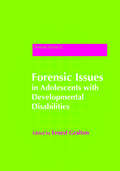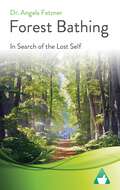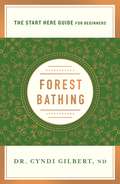- Table View
- List View
For When I'm Gone: The most heartbreaking and uplifting debut to curl up with in 2021!
by Rebecca Ley'For fans of Maggie O'Farrell and Jojo Moyes, this is a sweeping book of love, motherhood, death and hope' STYLIST'Wonderfully assured' THE TIMES'Pass the tissues...'EVENING STANDARD'Lovely novel. Highly recommend' JENNI MURRAY'Beautifully written'THE SUN'Prepare for heartbreak'WOMAN & HOME'A beautiful story' LAURA PEARSON'Brilliant' BELLABecause there's never enough time to say goodbye... Sylvia knows that she's running out of time. Very soon, she will exist only in the memories of those who loved her most and the pieces of her life she's left behind. So she begins to write her husband a handbook for when she's gone, somewhere to capture the small moments of ordinary, precious happiness in their married lives. From raising their wild, loving son, to what to give their gentle daughter on her eighteenth birthday - it's everything she should have told him before it was too late. But Sylvia also has a secret, one that she's saved until the very last pages. And it's a moment in her past that could change everything...Praise for For When I'm Gone:'Beautifully written, with powerful messages of hope' KATHERINE WEBB'A moving portrait of a modern family in crisis' FRANCESCA HORNAK'Ley took my breath away. Exquisitely written and deeply effective' KATE WEINBERG'Heart-breaking. Beautifully written. Reminded me of Maggie O'Farrell' REBECCA THORNTON'A beautiful, sharply observed tale of motherhood, complicated women and family dynamics' CHARLOTTE PHILBY'Heartbreaking and yet uplifting... Rebecca Ley has written a wonderful debu't JENNY QUINTANA'Rebecca Ley explores the need for love, forgiveness and remembrance that's within us all' WOMAN'S WEEKLY
For Women Only: A Revolutionary Guide to Reclaiming Your Sex Life
by Jennifer Berman MD MD Laura Berman PhD PhDAccording to The Journal of the American Medical Association, 43% of women in America - of all ages - suffer from sexual dysfunction. But doctors have generally dismissed these complaints, telling women their problems are just in their heads or something they have to accept. Dr. Jennifer Berman is one of the few female urologists in the country; Dr. Laura Berman is a sex therapist. Together these sisters run the Women's Sexual Health Clinic at Boston University Medical Center - the first in the country to offer comprehensive physiological and psychological treatment of female sexual dysfunction. In their research and clinical work, the Bermans have learned that many of the same physical problems that cause impotence in men can cause dysfunction in women. Many women also experience diminished sexual response after aging and menopause, or after hysterectomies or other pelvic surgery.In this book the Drs. Berman give women of all ages the information they need to understand what's going on with their bodies and what treatments are available in order to achieve more fulfilling sex lives.
The Forager's Cookbook: Identify & Prepare Edible Weeds & Wild Plants
by Julie Bruton-Seal Matthew SealMore than a recipe book, more than a foraging book, more than a guide to herbal medicine. Discover 90 exciting recipes showcasing weeds that are delicious, nutritious, medicinal, too good to waste—and free!Why should we eat our weeds? Because they are delicious, adding a palate of new flavors in everyday cooking. They are also nutritious and too good to waste. Weeds are actually more nutritious than most of the vegetables we grow or buy. They often have deep roots that loosen the soil and bring minerals up from far below. Weeds can help cover the soil, keep moisture in it, and preserve its fertility. They offer a second crop among our other plants, for free, and are often available in the late winter and early spring when our vegetables are yet to get going. When it's time to weed, the edible weeds can be eaten. Why throw perfectly good food on the compost heap?With weeds, as with all wild plants you may be planning to eat, proper ID is essential. Rule number one is eat only what you are sure of. In this book, Julie Bruton-Seal and Matthew Seal have provided clear photographs and other written identification details for twenty-two common weeds. They also give guidance on how to harvest safely and responsibly. And you'll find ninety delicious recipes highlighting your foraged goodies. Recipes include:Chickweed PestoDaisy TeaDandelion Flower JamElderberry VinegarOrache TartGround Ivy Hot Cross BunsHogweed PaellaMugwort and Mushroom SoupAnd more!
Foraging: Discover Free Food from Fields, Streets, Gardens and the Coast
by Paul Chambers&“A useful and practical field guide&” to finding delicious, indigenous edibles—full of color photos and including a forager&’s calendar (The Countryman). Long before there were convenient supermarkets, foraging for edible plants was as essential to survival as hunting and farming. For today&’s forager, it&’s a fun and practically free way to eat fresh and get to know your local environment. In Foraging, naturalist author Paul Chambers gives you the knowledge and knowhow you need to start going on your own foraging adventures. Focused on the British Isles, this comprehensive guide includes lists of indigenous edible plants, arranged alphabetically and by region. A full range of environments are covered, from the fields and forests of the countryside to suburban gardens, city streets, and even the coast. Chambers offers practical tips for identifying, collecting, preparing, and preserving forageables, as well each plants&’ historical, cultural, and medicinal meanings and uses. Packed with helpful illustrations and trivia, this volume is the result of years of experience and a passion for naturalism, and shares more than one hundred plants suitable for eating.
Foraging: A practical guide to finding and preparing free wild food
by John Lewis-StempelA practical guide to finding and preparing food from hedgerows, parks, fields, woods, rivers and seashore. Aimed at the beginner, it also has a wealth of tips for the enthusiast, and, unlike other books on wild food, covers foraging in the urban environment as well as the countryside. The book shows the reader 'Where, How and When' to find the best edible berries, leaves, flowers, mushrooms, seaweed, shellfish and snails, with clear and full instructions on what is safe to eat. Foraging covers the 100 wild foods that are good to eat, fun to find, easy to identify - and will make a healthy difference to your diet and your bank balance. The book is organised by environment so when taking a walk, gardening, or having a day out you know how to gather a hedgerow harvest, a field feast, a seaside salad. Each entry features one species, and fully explains its looks, exactly where in the habitat it will be found, when it is ripe to eat, its alternative names, its history, how to harvest it, its culinary uses. There are full instructions too on preparation of each plant/fungi/animal, along with recipes for its use. Comfrey fritters, hazelnut pate, nettle beer,sorrel soup, dandelion coffee, blackberry jam....
Forbidden Flowers: More Women's Sexual Fantasies
by Nancy FridayA collection of women&’s intimate erotic thoughts by the #1 New York Times–bestselling author of The Secret Garden and &“liberator of the female libido&” (Newsday). The publication of the groundbreaking expose on women's sexual fantasies, My Secret Garden, ushered in a revolution in women's sexual freedom of expression. In Forbidden Flowers, Nancy Friday reveals even more erotic, wild, and explicit fantasies expressed by women all over the world, from all ethnic and socioeconomic backgrounds. Like My Secret Garden before it, Forbidden Flowers is a celebration of the depth, potency, and imaginative breadth of women&’s inner erotic lives. By giving female readers a glimpse into the ordinary and often extraordinary fantasies of other women, it offers to some an exhilarating freedom from the guilt and shame so often associated with sexual fantasy—and to others, provides fascinating insight into the psychology of female sexual response. &“The author whose books about gender politics helped redefine American women&’s sexuality.&” —The New York Times
Forbidden Fruits: An Occult Novel
by Joscelyn Godwin Guido Mina di SospiroA bold thriller filled with esoteric secrets, psychedelic rituals, blackmail, and murder • Follows American archaeologist Monica Bettlheim, her benefactor Maltese billionaire Sebastian Pinto, and Pinto&’s son Rafael as they make startling discoveries about the ancient world, hallucinogenic sacraments, and modern-day crime syndicates • Reveals a secret ritual at the heart of Christianity, knowledge of which was passed on underground by Gnostics and alchemists for centuries • Explore the use of the Kykeon, the psychedelic brew of the Eleusinian mysteries, which offers those who drink it a direct experience of God Amid the European refugee crisis, with the background of Southern Europe having become the point of arrival for hundreds of thousands of desperate migrants, Monica Bettlheim, an American archaeologist, is trying to recapture her former fame. She has a mission to uncover prehistoric cultures that conventional archaeology and history both fear and deny. Her search is sponsored by an eccentric aristocrat, the larger-than-life Maltese billionaire Sebastian Pinto. On an underwater expedition off the coast of Malta, Monica finds a mysterious golden pomegranate that dates back to prehistoric times. Within it, she discovers ancient remnants of the Kykeon, the hallucinogenic sacrament of the Eleusinian mysteries, which offers those who drink it a direct experience of God. As the discovery leads to blackmail and murder, Monica uncovers a secret ritual right at the heart of Christianity, knowledge of which was passed on underground by Gnostics and alchemists for centuries. Reluctantly, Monica teams up with the elusive and troubled Rafael, Pinto&’s son, who for some years has been deeply immersed in esoteric studies. Driven by the need to avenge a murder and uncover the activities of an international crime syndicate, they risk their lives by reviving the sacred ritual--and are confronted by the most terrifying revelation of all.
Forbidden History: Prehistoric Technologies, Extraterrestrial Intervention, and the Suppressed Origins of Civilization
by J. Douglas KenyonChallenges the scientific theories on the establishment of civilization and technology• Contains 42 essays by 17 key thinkers in the fields of alternative science and history, including Christopher Dunn, Frank Joseph, Will Hart, Rand Flem-Ath, and Moira Timmes• Edited by Atlantis Rising publisher, J. Douglas KenyonIn Forbidden History writer and editor J. Douglas Kenyon has chosen 42 essays that have appeared in the bimonthly journal Atlantis Rising to provide readers with an overview of the core positions of key thinkers in the field of ancient mysteries and alternative history. The 17 contributors include among others, Rand Flem-Ath, Frank Joseph, Christopher Dunn, and Will Hart, all of whom challenge the scientific establishment to reexamine its underlying premises in understanding ancient civilizations and open up to the possibility of meaningful debate around alternative theories of humanity's true past. Each of the essays builds upon the work of the other contributors. Kenyon has carefully crafted his vision and selected writings in six areas: Darwinism Under Fire, Earth Changes--Sudden or Gradual, Civilization's Greater Antiquity, Ancestors from Space, Ancient High Tech, and The Search for Lost Origins. He explores the most current ideas in the Atlantis debate, the origins of the Pyramids, and many other controversial themes.The book serves as an excellent introduction to hitherto suppressed and alternative accounts of history as contributors raise questions about the origins of civilization and humanity, catastrophism, and ancient technology. The collection also includes several articles that introduce, compare, contrast, and complement the theories of other notable authors in these fields, such as Zecharia Sitchin, Paul LaViolette, John Michell, and John Anthony West.
Forbidden Knowledge: A Self-Advocate's Guide to Managing Your Prescription Drugs
by Terence H. YoungTerence Young exposes the pharmaceutical industry secrets and cultural myths that thwart our safe use of prescription drugs.… Everyone should read it before their next visit to a doctor. — DR. NANCY OLIVIERI, MD, physician and professor When it comes to drug safety, Big Pharma holds all the power, and it’s time for patients to take it back.Tens of millions of patients in North America take prescription drugs, but the safety of these drugs is often based on medical myths. We are led to believe that if a medication isn’t safe, the government would never allow it on the market and that doctors would never prescribe a drug that isn’t proven effective. Who controls these narratives? And do they always have the best interests of patients in mind?In an in-depth study of the enormous influence the pharmaceutical industry has over our health, drug safety advocate Terence Young explores how those with the most to gain financially are also those who wield all the power in health care — and withhold the knowledge that is critical to the safety of patients.Forbidden Knowledge reveals the truth you need to know about prescription drugs and what to do about it. It will empower you to partner with your doctor to talk openly and plainly about medications to help avoid serious adverse drug reactions. This is your survival guide to Big Pharma.
Forbidden Religion: Suppressed Heresies of the West
by J. Douglas KenyonReveals the thread that unites the spiritual paths that have opposed orthodox religion over the centuries and the challenge they provide to the status quo • Contains 40 essays by 18 key investigators of heresies and suppressed spiritual traditions, including Steven Sora, Ian Lawton, Jeff Nisbet, P.M.H. Atwater, John Chambers, and Vincent Bridges • Edited by Atlantis Rising publisher, J. Douglas Kenyon Following the model of his bestselling Forbidden History, J. Douglas Kenyon has assembled from his bi-monthly journal Atlantis Rising material that explores the hidden path of the religions banned by the orthodox Church--from the time before Christ when the foundations of Christianity were being laid to the tumultuous times of the Cathars and Templars and the Masons of the New World. Revealed in this investigation of the roots of Western faith are the intimate ties of ancient Egyptian religion to Christianity, the true identities of the three magi, the link forged by the Templars between early Christianity and the Masons, and how these hidden religious currents still influence the modern world. This book serves as a compelling introduction to the true history of the heretical religious traditions that played as vital a role in society as the established faiths that continuously tried to suppress them. Born in the same religious ferment that gave birth to Christianity, these spiritual paths survived in the “heresies” of the Middle Ages, and in the theories of the great Renaissance thinkers and their successors, such as Isaac Newton and Giordano Bruno. Brought to the New World by the Masons who inspired the American Revolution, the influence of these forbidden religions can be still found today in “The Star Spangled Banner” and in such Masonic symbols as the pyramid on the back of the dollar bill.
Forbidden Rites: A Necromancer’s Manual of the Fifteenth Century (Magic in History)
by Richard KieckheferPreserved in the Bavarian State Library in Munich is a manuscript that few scholars have noticed and that no one in modern times has treated with the seriousness it deserves. Forbidden Rites consists of an edition of this medieval Latin text with a full commentary, including detailed analysis of the text and its contents, discussion of the historical context, translation of representative sections of the text, and comparison with other necromantic texts of the late Middle Ages. The result is the most vivid and readable introduction to medieval magic now available. Like many medieval texts for the use of magicians, this handbook is a miscellany rather than a systematic treatise. It is exceptional, however, in the scope and variety of its contents—prayers and conjurations, rituals of sympathetic magic, procedures involving astral magic, a catalogue of spirits, lengthy ceremonies for consecrating a book of magic, and other materials. With more detail on particular experiments than the famous thirteenth-century Picatrix and more variety than the Thesaurus Necromantiae ascribed to Roger Bacon, the manual is one of the most interesting and important manuscripts of medieval magic that has yet come to light.
Forbidden Rites: A Necromancer’s Manual of the Fifteenth Century (Magic in History)
by Richard KieckheferPreserved in the Bavarian State Library in Munich is a manuscript that few scholars have noticed and that no one in modern times has treated with the seriousness it deserves. Forbidden Rites consists of an edition of this medieval Latin text with a full commentary, including detailed analysis of the text and its contents, discussion of the historical context, translation of representative sections of the text, and comparison with other necromantic texts of the late Middle Ages. The result is the most vivid and readable introduction to medieval magic now available. Like many medieval texts for the use of magicians, this handbook is a miscellany rather than a systematic treatise. It is exceptional, however, in the scope and variety of its contents—prayers and conjurations, rituals of sympathetic magic, procedures involving astral magic, a catalogue of spirits, lengthy ceremonies for consecrating a book of magic, and other materials. With more detail on particular experiments than the famous thirteenth-century Picatrix and more variety than the Thesaurus Necromantiae ascribed to Roger Bacon, the manual is one of the most interesting and important manuscripts of medieval magic that has yet come to light.
The Forbidden Rumi: The Suppressed Poems of Rumi on Love, Heresy, and Intoxication
by Nevit O. Ergin Will JohnsonThe first collection of poems translated into English from the forbidden volume of the Divan of Rumi• Presents Rumi’s most heretical and free-form poems• Includes introductions and commentary that provide both 13th-century context and modern interpretationAfter his overwhelming and life-altering encounters with Shams of Tabriz, Rumi, the great thirteenth-century mystic, poet, and originator of the whirling dervishes, let go of many of the precepts of formal religion, insisting that only a complete personal dissolving into the larger energies of God could provide the satisfaction that the heart so desperately seeks. He began to speak spontaneously in the language of poetry, and his followers compiled his 44,000 verses into 23 volumes, collectively called the Divan.When Nevit Ergin decided to translate the Divan of Rumi into English, he enlisted the help of the Turkish government, which was happy to participate. The first 22 volumes were published without difficulty, but the government withdrew its support and refused to participate in the publication of the final volume due to its openly heretical nature. Now, in The Forbidden Rumi, Will Johnson and Nevit Ergin present for the first time in English Rumi’s poems from this forbidden volume. The collection is grouped into three sections: songs to Shams and God, songs of heresy, and songs of advice and admonition. In them Rumi explains that in order to transform our consciousness, we must let go of ingrained habits and embrace new ones. In short, we must become heretics.
Forbidden Science: From Ancient Technologies to Free Energy
by J. Douglas KenyonReveals the cutting edge of New Science and shows how established science disallows inquiry that challenges the status quo--even when it produces verifiable results • Contains 43 essays by 19 researchers denoting cutting-edge, heretical, or suppressed scientific research, including Immanuel Velikovsky, Nikola Tesla, Rupert Sheldrake, and Masaru Emoto • Edited by Atlantis Rising publisher, J. Douglas KenyonFollowing the model of his bestselling Forbidden History and Forbidden Religion, J. Douglas Kenyon has assembled from his bimonthly journal, Atlantis Rising, material that explores science and technology that has been suppressed by the orthodox scientific community--from the true function of the Great Pyramid and the megaliths at Nabta Playa to Immanuel Velikovsky’s astronomical insights, free energy from space, cold fusion, and Rupert Sheldrake’s research into telepathy and ESP.There is an organized war going on in science between materialistic theory and anything that could be termed spiritual or metaphysical. For example, Masaru Emoto’s research into the energetics of water, although supported by photographic evidence, has been scoffed at by mainstream science because he has asserted that humans affect their surroundings with their thoughts. The materialism or absolute skepticism of the scientific establishment is detrimental to any scientific inquiry that thinks outside the box. This mentality is interested in preserving funding for its own projects, those that will not rock the establishment. From Tesla’s discovery of alternating current to Robert Schoch’s re-dating of the Sphinx, this book serves as a compelling introduction to the true history of alternative and New Science research.
The Force Is With Us
by Thomas WalkerInspired by encounters with his son from beyond the grave, Tom Walker went searching for answers. He discovered that paranormal phenomena have not only been exhaustively studied, but that scientific evidence exists to support it. He uncovered numerous scientific studies involving telepathy, clairvoyance, precognition, and psychokinesis, as well as government-funded scientists who proved their validity. Through his research, Walker eventually came to the belief that there is a force in the world that makes things happen. The force, an energy field that permeates the universe, forms and sustains all things, and is the basis behind paranormal phenomena and alternative forms of healing. He describes his provocative conclusions in this book. Making compelling connections between ideas like the Great Void and "dark matter," between Ch'i and quantum fields, Walker argues that it is our connection with the higher planes of consciousness -- the fundamental quantum reality-- that truly makes up the world.
The Force Is With Us
by Thomas WalkerInspired by encounters with his son from beyond the grave, Tom Walker went searching for answers. He discovered that paranormal phenomena have not only been exhaustively studied, but that scientific evidence exists to support it. He uncovered numerous scientific studies involving telepathy, clairvoyance, precognition, and psychokinesis, as well as government-funded scientists who proved their validity. Through his research, Walker eventually came to the belief that there is a force in the world that makes things happen. The force, an energy field that permeates the universe, forms and sustains all things, and is the basis behind paranormal phenomena and alternative forms of healing. He describes his provocative conclusions in this book. Making compelling connections between ideas like the Great Void and "dark matter," between Ch'i and quantum fields, Walker argues that it is our connection with the higher planes of consciousness - the fundamental quantum reality- that truly makes up the world.
The Force of Character
by James HillmanIn his bestselling The Soul's Code, James Hillman restored passion and meaning to the concept of identity, arguing that each of us is born with an innate character, the "daimon" or "spirit" that calls us to what we are meant to be. Now, in The Force of Character, Hillman brings the idea of character full circle, offering a revolutionary new vision of life's most feared and misunderstood chapter: old age. "Aging is no accident," Hillman writes. "It is necessary to the human condition, intended by the soul." We become more characteristic of who we are simply by lasting into later years; the older we become, the more our true natures emerge. Thus the final years have a very important purpose: the fulfillment and confirmation of one's character. Contrary to the current genetic determinism that sees increased longevity as a wasted aberrance created by civilization, The Force of Character presents an explosive new thesis: The changes of old age, even the debilitating ones, have purposes and values organized by the psyche. Memory for recent events may falter, offering more place for long-term recollections. A heart condition in later life brings an opportunity to remove blockages from constricted relationships, while changes in sleep patterns allow the old to experience the profound elements of nighttime that we usually overlook. As Hillman says, "Aging makes metaphors of biology." In this empowering and original work, James Hillman resurrects the ancient, widespread, and socially effective idea of the old person as "ancestor," a model for the young, the bearer of a society's cultural memory and traditions. America disregards old people who aren't young-acting and young-looking. We don't realize that "oldness" is an archetypal state of being that can add value and luster to things we treasure, places we revere, and people's character. When we open our imaginations to the idea of the ancestor, aging can free us from convention and transform us into a force of nature, releasing our deepest beliefs for the benefit of society. For all who read it, The Force of Character will be a seminal, life-affirming experience.
Force of Habit: Unleash Your Power by Developing Great Habits
by Tamsin Astor PHDStop harmful habits—and develop ones that heal and empower you—with a plan rooted in both neuroscience and all-natural solutions. Dr. Tamsin Astor blends her scientific background as a PhD in cognitive neuroscience with her Yoga, Ayurveda, Meditation, and Coaching training to offer a unique approach to mastering your daily habits. Using tools from Health and Executive coaching, Tamsin provides a plan to help you navigate from a multi-tasking, low energy, time-deprived existence to one of abundance, nourishment, and fun! Feeling like there isn’t enough time or energy to get everything done? Follow the steps in this book to regain your power and reduce your stress. You’ll learn: The “Shoulds” & why they don’t serve youMotivation and different theories to understand itStress and what it’s secretly doing to you & why we need a little “good” stressWhy there isn’t one definition of “healthy” and a new model for understanding healthA new way of thinking about everyday habits and how you need to change themHow to think about your relationship with yourself—are you falling into learned helplessness?How to assess your relationships with others, and whether you’re cultivating enablers or supporters By establishing healthy habits, you can unleash your true power—by freeing up your time from the thousands of micro-decisions you make on a day-to-day basis.
Forecasting by Astrology: a comprehensive Manual of Interpretation and Technique
by Martin FreemanA new and comprehensive manual of astrological forecasting that combines a modern psychological approach to the subject with clear and precise instructions on how to calculate the necessary data , and then how to handle and interpret it. Beginning with a discussion of the concepts of fate ' and free will, Martin Freeman goes on to elucidate the vital concept of astrological cycles and explain in detail the use of progressions, directions and transits in forecasting. The techniques discussed range from solar and lunar trines and converse progressions rectification, tertiaries and minors, an astrological birth control. For students and professionals alike, this is an essential addition to the literature of practical astrology. Martin Freeman works as an astrological consultant and has a counselling and therapy practice in London. He has been actively involved with the Astrological Association in the UK and in 1979 was elected President of the Faculty of Astrological Studies. '
Foreign Bodies: Pandemics, Vaccines, and the Health of Nations
by Simon SchamaA vibrant cultural history investigating the tangled and complex history of pandemics and vaccines, by bestselling author and historian Simon SchamaCities and countries engulfed by panic and death, desperate for vaccines but fearful of what inoculation may bring. This is what the world has just gone through with Covid-19. But as Simon Schama shows in his epic history of vulnerable humanity caught between the terror of contagion and the ingenuity of science, it has happened before. Characteristically, Schama’s message is delivered through gripping, page-turning stories set in the eighteenth and nineteenth centuries: smallpox strikes London; cholera hits Paris; plague comes to India. Threading through the scenes of terror, suffering and hope – in hospitals and prisons, palaces, and slums – are an unforgettable cast of characters: a philosopher-playwright burning up with smallpox in a country chateau; a vaccinating doctor paying house calls in Halifax; a woman doctor in south India driving her inoculator-carriage through the stricken streets as dead monkeys drop from the trees. But we are also in the labs when great, life-saving breakthroughs happen, in Paris, Hong Kong, and Mumbai. At the heart of it all is an unsung hero: Waldemar Haffkine, a gun-toting Jewish student in Odesa turned microbiologist at the Pasteur Institute, hailed in England as “the saviour of mankind” for vaccinating millions against cholera and bubonic plague in British India while being cold-shouldered by the medical establishment of the Raj. Creator of the world’s first mass production line of vaccines in Mumbai, he is tragically brought down in an act of shocking injustice. Foreign Bodies crosses borders between east and west, Asia and Europe, the worlds of rich and poor, politics and science. Its thrilling story carries with it the credo of its author on the interconnectedness of humanity and nature; of the powerful and the people. Ultimately, Schama says, as we face the challenges of our times together, “there are no foreigners, only familiars.”
The Foremost Good Fortune
by Susan ConleySusan Conley, her husband, and their two young sons say good-bye to their friends, family, and house in Maine for a two-year stint in a high-rise apartment in Beijing, prepared to embrace the inevitable onslaught of new experiences that such a move entails. But Susan can’t predict just how much their lives will change. While her husband is consumed with his job, Susan works on finishing her novel and confronting the challenges of day-to-day life in an utterly foreign country: determining the proper way to buy apples at a Chinese megamarket; bribing her little boys to ride the school bus; fielding invitations to mysterious “sweater parties” and tracking down the faux-purse empire of the infamous Bag Lady; and getting stuck in an elevator, unable to call for help in Mandarin. Despite the distractions, there are many occasions for joy. From road trips to the Great Wall and bartering for a “starter Buddha” at the raucous flea market to lighting fireworks in the streets for the Chinese New Year and feasting on the world’s best dumplings in back-alley restaurants, they gradually turn their unfamiliar environs into a true home. Then Susan learns she has cancer. After undergoing treatment in Boston, she returns to Beijing, again as a foreigner—but this time, it’s her own body in which she feels a stranger. Set against the eternally fascinating backdrop of modern China and full of insight into the trickiest questions of motherhood—How do you talk to children about death? When is it okay to lie?—this wry and poignant memoir is a celebration of family and a candid exploration of mortality and belonging.
Forensic Human Factors and Ergonomics: Case Studies and Analyses (Human Factors and Ergonomics)
by Michael S. WogalterThis book has 18 case study chapters investigating various injury scenarios through the use of a Human Factors and Ergonomics (HFE) analysis. Each injury scenario derives from one or more similar lawsuits (but names, places and some of the details are fictionalized). The scenarios describe a ‘slice of life’ of people interacting with products, equipment, tasks, and environments before they are seriously hurt. The forensic analysis that follows each scenario gives a background of prior similar events and systematically examines potential causes leading to the injury event. There is emphasis on the person-machine interface, human error, hazard analysis, hazard control and a model of communication-human information processing (C-HIP). Chapters are authored by highly experienced expert witnesses in HFE. The methods used are general techniques that can be applied to other injury scenarios, but would be better if employed earlier in a product’s life cycle to prevent or limit injury. The first three chapters introduce concepts useful for the analyses in the case study chapters. The last chapter offers some broad take-away points that cut across several of the case studies. Features contributions by persons who have extensive experience in HFE and who have served professionally in the role of an expert witness in various legal cases mostly in product liability Gives a broad range of situations to illustrate where HFE considerations could improve product or environmental safety. There is an emphasis on children/caregivers, and adult activities such as driving Uses mitigation strategies to reduce the likelihood of occurrence and severity of adverse events Includes a first-person scenario at the beginning of each chapter Allows the lessons learned to be adaptable to other domains where people interact with products and environments
Forensic Issues in Adolescents with Developmental Disabilities
by Ernest GraltonAdolescents with developmental disabilities are a complex population who require specialised treatment and care. This interdisciplinary text examines the processes involved in working with this client group in forensic settings, and explores the ways in which their needs differ from those of other young people who engage in high risk behaviour or offending. The book covers assessment, intervention and treatment options for adolescents with a wide range of developmental disabilities, including autism spectrum disorders, acquired brain injury, developmental traumatology, and complex comorbidities. It describes the obstacles, challenges and opportunities to consider when working with this population, and the role played by various professionals, including forensic psychiatry and psychology, occupational therapy, physiotherapy, education, art psychotherapy and social work. The book also outlines the issues to consider when working in secure and community settings as well as the legal aspects of working with this client group, and the complex issues surrounding risk assessment. The first comprehensive account of forensic issues in adolescents with developmental disabilities, this book will be an indispensible primary resource for a wide range of professionals, including child and adolescent psychiatrists, community psychiatric nurses, developmental paediatricians, social workers and youth workers, lawyers and advocates.
Forest Bathing: In Search of the Lost Self
by Dr Angela FetznerForest bathing is the term used to describe the conscious immersion in the unique atmosphere of the forest. We perceive the forest mindfully and with all our senses – in this way, we nourish and strengthen our body, mind, and soul. We are akin to swimming in the green ocean of the forest, gradually sinking deeper into its embrace. Like riding a wave, we allow ourselves to drift and intuitively absorb the healing powers of the forest. The forest as a place of deceleration and healing Especially in today's era of constant sensory overload and an ever-accelerating pace, the longing for deceleration and rejuvenation is growing. Intense scent of pine, moss, damp forest floor – the forest, as a special place of power, exerts a strong and healing effect on our psyche and body. Being in the forest benefits us, something we sense intuitively. The forest grounds us, bestows strength, vitality, relaxation, serenity, and inner peace. Furthermore, forest bathing bolsters the immune system and the body's resilience. The cardiovascular system and musculoskeletal system also profit from forest bathing. Especially in psychologically demanding situations, times of stress, as well as in cases of depression and anxiety disorders, forest baths are helpful. All important aspects of forest bathing – ranging from the latest scientific insights, practical exercises in the forest, to your personal guide to forest bathing – are described in this comprehensible and empathetic book. Numerous colorful illustrations complement the text.
Forest Bathing: Discovering Health and Happiness Through the Japanese Practice of Shinrin Yoku (A Start Here Guide) (A Start Here Guide)
by Dr. Cyndi GilbertAuthor and naturopathic physician Dr. Cyndi Gilbert introduces readers to the art and science of forest bathing, the deceptively simple Japanese practice of spending time in the forest as a way to find peace, rejuvenation, and to promote health.Dr. Gilbert shares her own personal history with the practice—how in the midst of an urban sprawl she lost touch with nature, only to rediscover it through the Japanese practice of Shinrin Yoku or forest bathing. In Forest Bathing, you'll discover the health benefits of Shinrin Yoku, from restoring Vitamin D to balancing your microbiome, along with the rich mental and emotional rewards that spending time surrounded by trees can offer. Forest bathing is a restorative, meditative activity for those who practice it by themselves, but Dr. Gilbert also explores the benefits of practicing forest bathing in community with family and friends. Most importantly, the book offers an easy and practical guide to begin your own forest bathing practice along with a resources section to help you further explore the topic. Learn to tap more deeply into your five senses, practice true mindfulness in sacred woodland spaces, and experience the healing impact of nature wherever you are.Other books in the Start Here Guide Series:Energy Healing: Simple and Effective Practices to Become Your Own HealerMeditation: The Simple and Practical Way to Begin MeditatingChakras: An Introduction to Using the Chakras for Emotional, Physical, and Spiritual Well-Being
